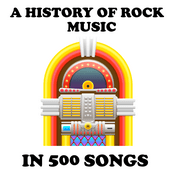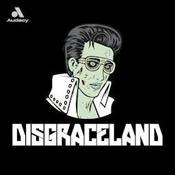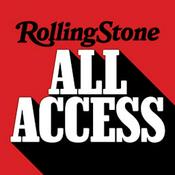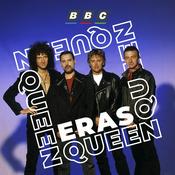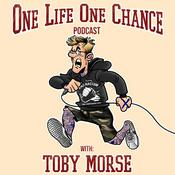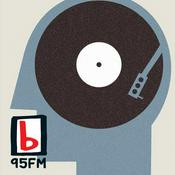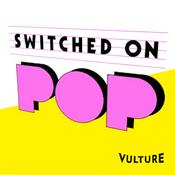Available Episodes
5 of 252
- Lou Toomey Interview (Brooks & Dunn, Keith Whitley, Faith Hill)Today we sit down with Lou Toomey, one of the most successful and enduring road guitarists in Country Music.In this conversation, Lou walks us through his unbelievable first pro gig as Keith Whitley’s lead guitarist during the height of Whitley’s all-too-brief but iconic career. From there, we follow his journey through the ’90s as he hit the road with Faith Hill, and into his remarkable three-decade run with Brooks & Dunn, all legendary Country touring acts.We dig into how he landed each of those gigs, the gear that shaped his tones across the years, and the mindset and work ethic that have kept him at the top of his game for nearly 50 years.www.truetone.comTo Support the Channel:Patreon https://www.patreon.com/AskZachttps://ask-zac-shop.fourthwall.comTip jar: https://paypal.me/AskZacVenmo @AskZacSupport the show--------1:29:37
- How I Ended Up Playing on Brad Paisley’s Snow Globe Town (and the Tonight Show!)This year has been one for the books. In this video, I’m sharing the unbelievable story of how I ended up performing on Brad Paisley’s new Christmas album, Snow Globe Town, and the fun we had in the studio bringing those tracks to life.I also dive into what it was like hitting the road with Brad on his November–December 2025 Canadian tour, from the gear I brought, to backstage routines, to the moments that made this run unforgettable.And to top it all off… The Tonight Show. I break down how that opportunity came together, what the day-of looked like behind the scenes, and the surreal feeling of stepping onto that stage under the bright lights.NEW MERCH SITE!https://ask-zac-shop.fourthwall.comSupport the show--------17:07
- Early ’60s Telecasters: What Changed & Who Made Them FamousEarly ’60s Fender Telecasters are legendary, but what really changed between 1959 and 1964? From rosewood “slab boards” and “veneers” to pickguard and hardware tweaks, we break down the details that shaped the classic early-’60s Tele look and sound.We’ll also highlight the famous players who made these Teles iconic, from country twang masters to R&B pioneers, and explore why 1961–1964 Telecasters are relatively rare compared to other Pre-CBS years.Support the show--------19:37
- Tele Gumbo: String Stretching, Bridge Covers, Book Review & Gig-Ready GearIn this week’s Ask Zac, I’m cooking up a little Tele Gumbo, as today’s show is a mix of guitar talk, gear love, and practical tips:A better way to stretch your strings, one that keeps your tuning stable and won’t damage your nut.Why Tele bridge covers (ashtrays) are actually useful — especially for protecting your strings and saddles when your guitar’s in a gig bag.Book Review: In-Law Country by Geoffrey Himes — a must-read for fans of Emmylou Harris and her circle of musical friends.Gig-Ready Gear: Why I love Headstrong Amps and Danocaster Guitars — no mods, no tweaks, just plug in and play.It’s a hearty serving of tips, tone, and talk — grab a coffee and dig in!#AskZac #TeleGumbo #Telecaster #GuitarTips #HeadstrongAmps #Danocaster #GuitarTalkwww.truetone.comNEW MERCH SITE!https://ask-zac-shop.fourthwall.comTo Support the Channel:Patreon https://www.patreon.com/AskZachttps://ask-zac-shop.fourthwall.comTip jar: https://paypal.me/AskZacVenmo @AskZacSupport the show--------14:34
- The Tour From Hell: My First Time on the RoadWhen you’re young and dreaming about hitting the road, touring sounds like the ultimate adventure, until you actually do it.In this episode, I look back on my first tour experience with the long drives, bad gigs, and all the hard lessons that came with it. It wasn’t glamorous, but it taught me things I still carry with me every time I step onstage.NEW MERCH SITE!https://ask-zac-shop.fourthwall.comTo Support the Channel:Patreon https://www.patreon.com/AskZachttps://ask-zac-shop.fourthwall.comTip jar: https://paypal.me/AskZacVenmo @AskZacSupport the show--------33:35
More Music podcasts
Trending Music podcasts
About Ask Zac
Zac Childs is a music insider and historian. He is the host of the acclaimed Truetone Lounge interview series and contributed to Vintage Guitar Magazine for 15 years via his Ask Zac column, and numerous featured articles, product reviews, and cover stories. On his ASK ZAC channel, Zac takes a look at players and gear and also answers guitar-related questions in ways that were never possible via print.
Podcast websiteListen to Ask Zac, A History of Rock Music in 500 Songs and many other podcasts from around the world with the radio.net app

Get the free radio.net app
- Stations and podcasts to bookmark
- Stream via Wi-Fi or Bluetooth
- Supports Carplay & Android Auto
- Many other app features
Get the free radio.net app
- Stations and podcasts to bookmark
- Stream via Wi-Fi or Bluetooth
- Supports Carplay & Android Auto
- Many other app features


Ask Zac
Scan code,
download the app,
start listening.
download the app,
start listening.
